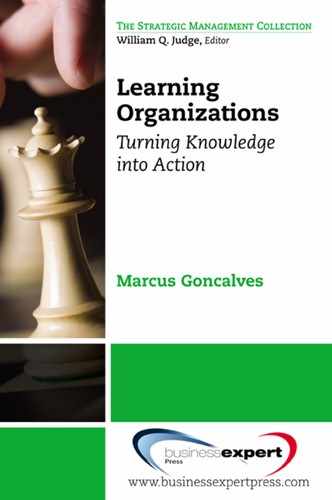Book Description
In a world facing economic recession, more and more professionals, teams, organizations, and inter-organizational networks are facing the need to restructure and renew themselves with the primary purpose of profitably to add even higher value to their bottom line. Knowledge management has become a key strategic asset for the twenty-first- century economy and for every organization that values knowledge it must invest in developing the best strategy for identifying, developing, and applying the knowledge assets it needs to succeed; it must strive to become a learning organization. This book demonstrates how the effective capture, dissemination, and management of knowledge throughout an organization can make it more competitive. In the book, the author discusses the importance of transforming traditional organizations into learning organizations—entities that foster a culture of continuous learning so that external change in all its facets can be recognized when it happens and internal change can be effected and managed when necessary. This book includes cases and lessons from leading world organizations that invested in knowledge management in order to remain competitive, and it offers strategies and guidance to organizational leaders who endeavor to deliver heightened value to all their stakeholders while eliminating the learning “disabilities” that threaten corporate productivity and success. To remain competitive every organization must invest in creating and implementing the best knowledge networks, processes, methods, tools, and technologies. This will enable them to learn, create new knowledge, and apply the best knowledge much faster.
Table of Contents
- Cover
- Halftitle
- Titlepage
- Copyright
- Dedication
- Abstract
- Contents
- Acknowledgments
- Introduction
- Chapter 1 Challenges Faced by Knowledge Workers in the Global Economy
- Chapter 2 A Knowledge Worker Profile
- Chapter 3 Turning Knowledge into Action
- Chapter 4 Nurturing Learning Organizations
- Chapter 5 Knowledge Technologies
- Chapter 6 Having a Mindset of Knowledge Capital
- Chapter 7 Knowledge Gaps and the Corporate Instinct
- Chapter 8 Bridging the Knowledge Gap and Leadership Dilemmas
- Notes
- References
- Index
- Lastpage
- Backcover
